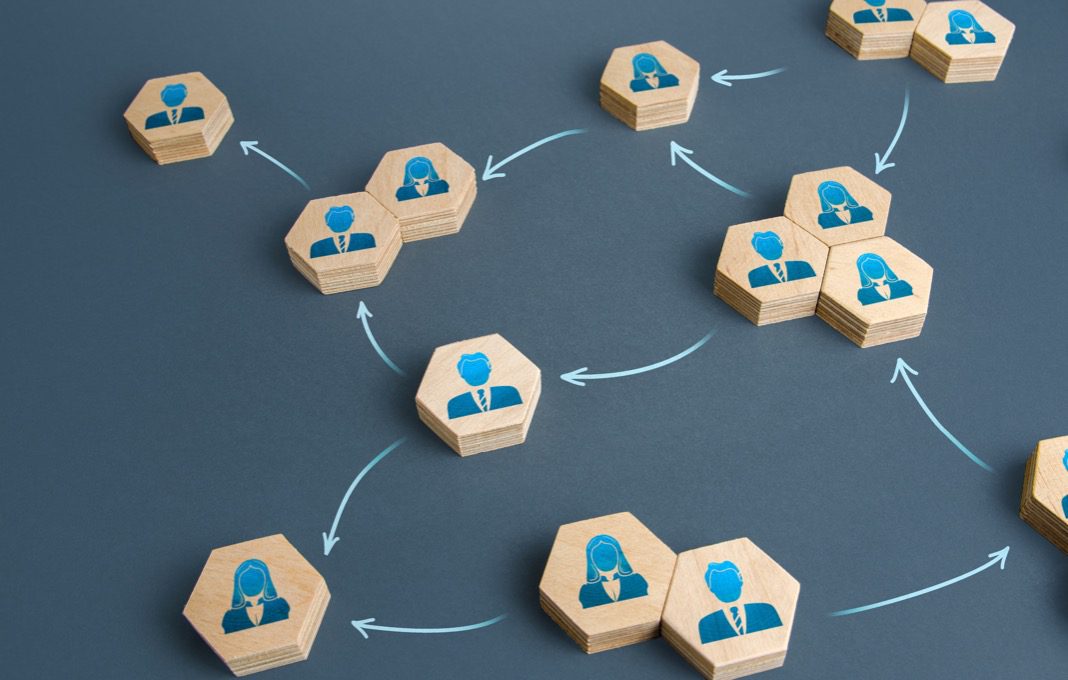When you hear the word “teal,” you probably think of colors, not business. But Teal leadership is a living organizational system that holds great promise for companies.
It abides by three fundamental principles: self-management, wholeness and evolutionary purpose. Teal leadership prompts people to live life from possibilities rather than fears and to value co-creativity, which requires personal autonomy and personal responsibility. (Hence, “self-managed organizations” are an expression of Teal consciousness.)
There are several key benefits to transforming into a flat, living organizational system:
• Faster decision-making. While leader-led decisions can create bottlenecks often due to risk mitigation, a self-managed organization decentralizes decision-making. This allows other team members to weigh in while speeding up the process and still minimizing risk.
• Better recruitment and retention results. An increasing number of people seek more value and purpose in their work, and purpose is one of the cornerstones of Teal organizations. The system invites engagement and participation, so team members aren’t solely invested in financial results. Employees become more focused on discovering their ambitions and listening to their peers, which can create an amazing team dynamic.
• Enabling people to bring their whole selves to work. When employees feel comfortable enough to rest in their identities outside and inside the workplace, they dare to be vulnerable. Vulnerability leads to resiliency and adaptability — two traits that can benefit your organization in a shifting marketplace.
Teal Leadership in Practice
Our company embodies Teal by design so we can attest to its benefits. For one, the decentralized decision-making process has prompted team members to take greater accountability for their roles and responsibilities. If they make a decision in their domain (within reason, of course), they own it and see it through. There is a role advice process and a governance process to ensure that nothing goes sideways, but people know they have the freedom to shape decisions. This empowers our team and minimizes much of the bureaucracy associated with traditional organizational systems.
We’ve also been experimenting with a novel concept that falls under Teal leadership: self-set salaries. As a baseline, we treat salary as an important factor for human existence, necessary for employees to live decent lives and feel rewarded based on their intrinsic needs. Every year, our company approaches salary discussions in several steps.
First, team members self-reflect before sharing their numbers with finance. No one else is privy to those numbers. After that, we socialize the numbers in a speed-dating feedback round, where individuals share insights on their performance and development opportunities as well as thoughts on the salaries they set for themselves. When all has been said, finance might veto or challenge certain self-set salaries. Team members will then go through a final objection round and set salaries by the end of the year. This process is not perfect and has been continuously evolving.
Although this approach to compensation isn’t for every business, it serves as an example of Teal’s attributes. Employees need to be fairly compensated for their efforts to feel whole. But instead of making a unilateral decision regarding their pay, our company promotes self-management and evolutionary purpose. Team members must think through what they’ve contributed to the organization, why they’ve made certain choices, and where they can still grow before settling on a number.
Transitioning to the Teal Leadership Model
When transitioning to a Teal leadership style, you must understand that your business is on a journey; it will continue to evolve with time. Here’s how you can get started:
1. Establish a clear purpose for your transition. Adopting a new organizational system is a challenge. So, expect a long road ahead. To stay the course, it’s essential to identify a meaningful purpose that is compelling and visionary — a purpose that employees can identify with and customers can get behind.
2. Design your system from a place of trust and enablement. People are hardwired to believe that good leaders are responsible for designing systems. But what if that’s not true? The individuals who know their own intrinsic motivators and human needs can help build this pathway with you. By seeking people’s perspectives, you get a front-row seat to their visions, needs, talents and capabilities. When you lead from a place of trust, your employees will feel heard and seen.
3. Appreciate tensions as pathways for evolution. Tensions are game changers. When practiced with nonviolent communication, they are fantastic conversation starters for what might potentially be an impactful shift in your organization. Addressing tensions is also one of our most important activities.
At LIVEsciences, we have a ‘me, myself and I’ role. It gives every person the accountability to self-reflect and raise tensions where we see opportunities to develop and evolve our relationships or our system as a whole. This includes tensions in salaries and other processes, for example.
4. Understand that patience is your best friend. Transitioning to a Teal organizational system can be an involved process. You’ll likely encounter complexities at a scale you’ve never seen before. As you experiment and test the system, it isn’t uncommon to take one step forward and two steps back. Rest assured, however, that you’ll experience a rewarding sense of confidence in people that’ll outweigh any frustrations. The key is to trust the evolutionary process.







































































